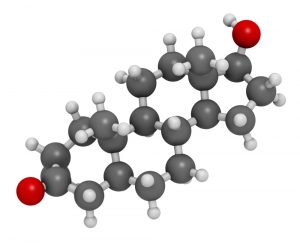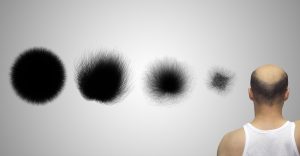Can bald spots develop hair?
Hair loss is a common problem that many people experience at some point in their lives. While many treatments are available for hair loss, one of the most common questions is whether or not hair can grow back in bald areas. In this blog post, we’ll explore the answer to that question and discuss some treatments available for hair loss.
What is Male Pattern Baldness
Male Pattern Baldness (MPB) or Androgenetic Alopecia, is by far the most common type of hair loss, accounting for approximately 95% of hair loss in men.
Androgenetic alopecia is usually a gradual, uniform process, which may not be visibly noticeable until nearly 50% of the hair has been lost in any given area.
Sudden or unexpected hair loss can sometimes indicate a more serious health condition that may need medical attention.
 How does Male Pattern Baldness manifest itself?
How does Male Pattern Baldness manifest itself?
Androgenetic Alopecia directly influences the hair cycle by shortening it, consequently resulting in hair thinning over time.
Hair will not immediately stop growing, but will steadily grow back thinner, with less pigment, and with a shorter life span, until eventually some follicles will just stop producing hair altogether.
This process is know as Miniaturization.
Male Pattern Baldness has a larger impact on the temples and on the crown, although some individuals may also experience a receding hairline.
Reasons for Male Pattern Baldness
Male Pattern Baldness is brought about when the following three factors interact: age, genetics and hormones.
Although Androgenetic Alopecia is normally associated with starting later in life, it could potentially kick start at any age, even in a man’s teenage years.
The primary cause of this type of hair loss is a person’s genetic sensitivity to Di-hydro-testosterone (DHT), which is the hormone responsible for shrinking hair follicles over time.
If this sensitivity is encoded in your genes, then it is almost certain that you will experience some form of hair loss during your lifetime.
 Things you can do to stop hair loss
Things you can do to stop hair loss
Many men see hair loss as a natural part of growing older, and therefore do not even perceive the need to search for a treatment. If, however, you wish to take action and to do all you can to delay visible signs of baldness, there are some things that can be done.
Lifestyle habits, medications, poor diet, stress, and environmental factors are all considered hair loss ‘accelerators’, in the sense that they all contribute to speeding up the process of hair loss by negatively influencing hair follicles.
The impact these accelerators have can be limited by making simple lifestyle changes that will ultimately allow hair follicles to better absorb much needed nutrients.
These changes include:
- following a balanced diet,
- leading a healthier lifestyle (for example getting more sleep or avoiding excessive alcohol intake),
- doing more exercise,
- finding ways to better deal with stressful situations.
Another way to stop hair loss and naturally regrow hair, is helping our body decrease the impact DHT has on our hair follicles by taking supplements that actively block the action of DHT.
Can hair grow back?
Once the reason(s) behind the hair loss has been recognized and the ‘accelerators’ have been dealt with, growth stimulants such as Topical Minoxidil formulas or Low-Level Laser Therapy can be used to boost the hair growth cycle.
Unfortunately hair loss of 5 years or more is usually not recoverable due to the death or the permanent miniaturization of the hair follicle, but hair that has been lost in more recent years, can typically be recovered.
If you choose to undergo a synergistic treatment to maximize results and increase your chances of a successful hair growth, do not be discouraged if you do not see immediate results. This is because the hair loss you are experiencing today began the process of detaching itself from the scalp 2-4 weeks ago, which means that, following its natural growth cycle, it will take another 8-12 weeks for it to start growing again.
As a result, in many cases, it could take you up to 3 months to begin noticing signs of progress.

 How does Male Pattern Baldness manifest itself?
How does Male Pattern Baldness manifest itself?